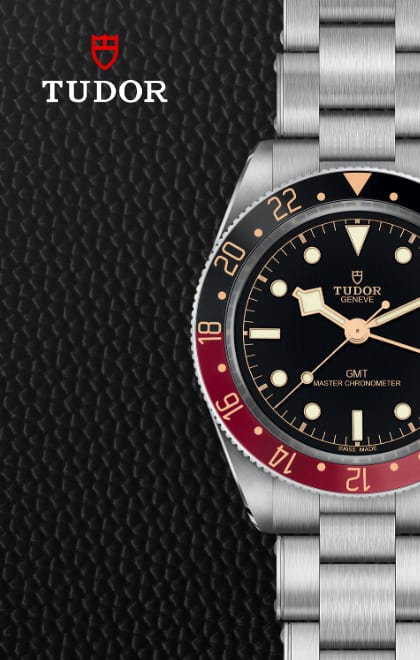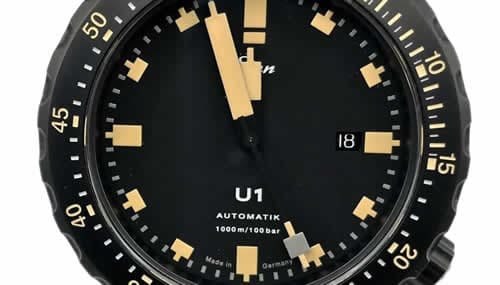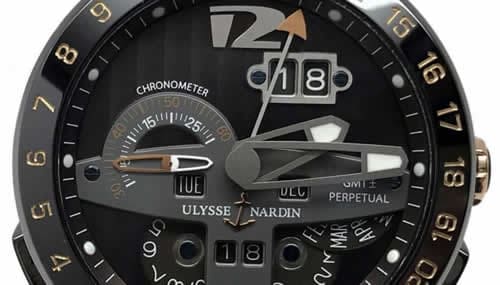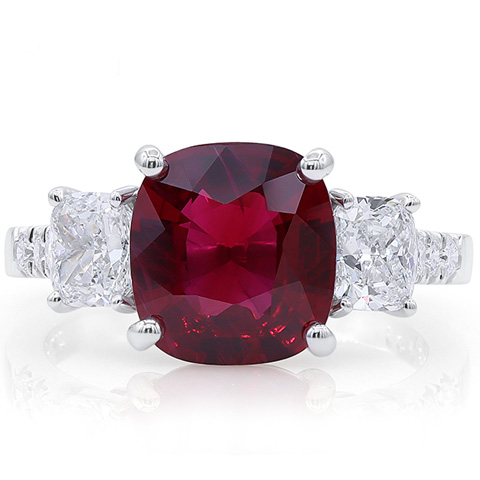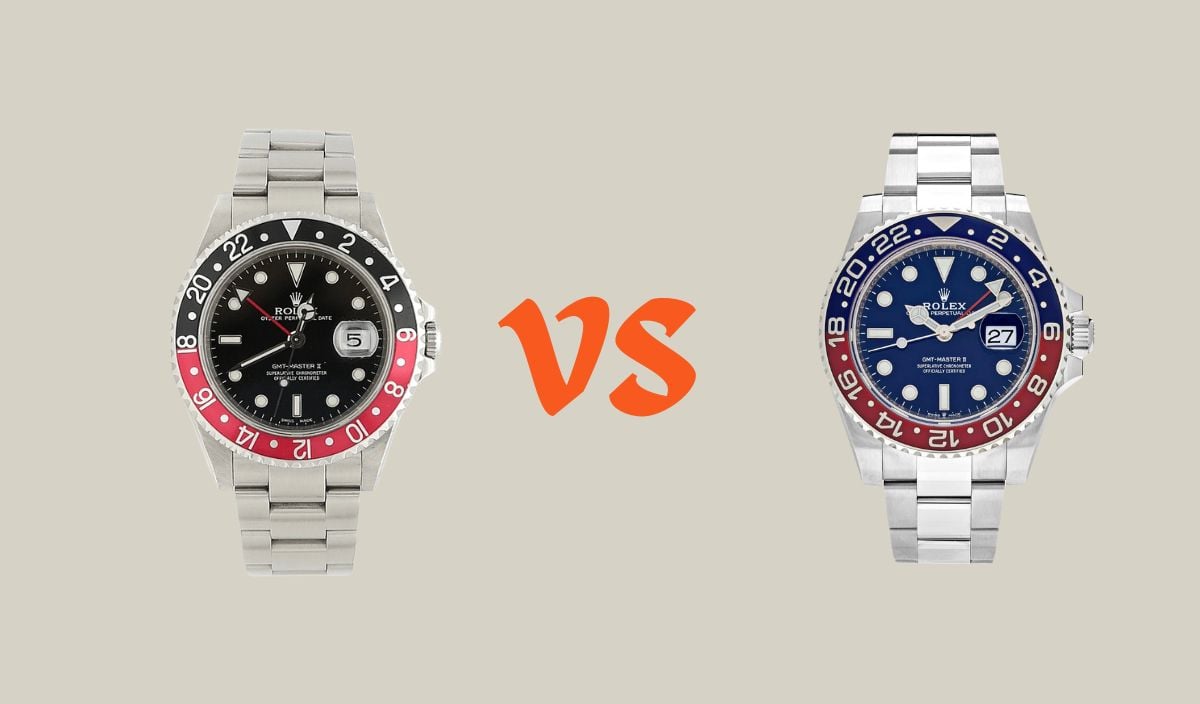
Rolex Coke vs. Pepsi: Which GMT Master II Is Best for You?
For most people, the phrase “Coke vs. Pepsi” evokes images of taste tests, slogans, and silly Superbowl commercials. For watch enthusiasts, however, the expression means one thing: “Ooh, ooh, Rolex GMTs!
As with most things in life, context is everything.
In the lead-up to Watches and Wonders 2025 when we’re all, well, wondering, “Is this the year?”, it’s fitting to take a look at the Rolex GMT Master II and its two most iconic bezel insert colorways, “Pepsi” (blue/red), and “Coke” (red/black).
One could simply assert, “You can’t go wrong either way.” True, but there are reasons why the various references and their colorways, sizes, configurations, dials, and materials used over the years might make one preferable over the other, depending on your needs and tastes.
I hope to give you a good history and overview of both the “OG” Rolex GMT Master “Pepsi” and GMT Master II (available in both “Pepsi” and “Coke”) and provide some guidance on how to choose the one that will work best for you—and it may or may not coincide with your favorite soda!
I’ll also reveal my big, fat FWIW prediction on whether or not Rolex will re-release an updated “Coke” GMT Master II in 2025, as well as my personal preference—which may require some Freudian psychoanalysis.
The Rolex GMT Master Pepsi
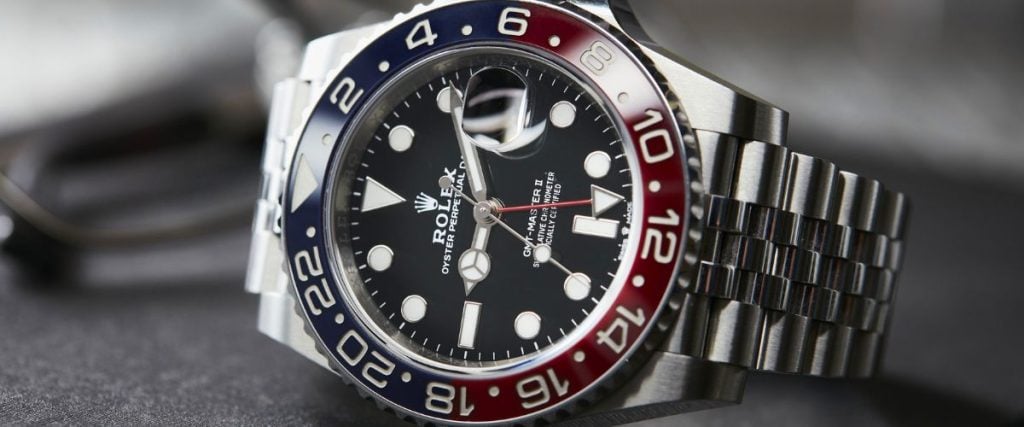
In the early 1950s, air travel around the world began to “take off” in a big way. More than ever, people began to think of not only local time, but also the time zone where they were traveling to or from.
Pan Am, a major airline in those days, saw the need for their pilots and employees to track a second time zone. They partnered with Rolex to create a tool watch to do just that, and the GMT Master was born in 1955.
That act of procreation launched a population explosion of GMT (GMT = Greenwich Mean Time, or the zero degrees meridian) watches across a multitude of brands that continues to this day.
The original GMT Master ref. 6542 had a 38mm stainless steel case diameter, modest by modern standards but large for the time, a case thickness of 13mm including its acrylic bezel, and came on a matching stainless steel “Oyster” bracelet.
The dial was “gilt gloss”, meaning that the text and markings were gold tone and slightly recessed below a glossy, black surface. The handset was gilt, with a “Mercedes” hours hand that allowed the wearer to easily discern it from the minutes hand and also more surface area for lume (in this case, radium). There was a date complication with a “Cyclops” magnifying lens at the 3 o’clock position.
The lumed, bidirectional red/blue bezel made of bakelite, an early form of synthetic plastic-like material, was embedded with Arabic numerals and plots representing the 24-hour world time scale.
The red half of the bezel corresponded with daylight, and the blue with night. The resemblance to the Pepsi logo was immediately obvious, and the nickname was born.
Bakelite bezels were prone to cracking, a particularly troublesome problem considering the numerals and plots were lumed with potentially unhealthy amounts of strontium-90, and they were replaced with aluminum ones in later editions.
The ref. 6542 lasted only 5 years and was followed by the workhorse 40mm case diameter reference ref. 1675 in 1959, which, with variations in bezel and dial colorways, dial print, crown guard sizes and styles, along with ever-improving movements, stayed on the job through 1980.
The GMT Master appeared in a series of other iterations and was officially retired in 1999 in the form of the ref. 16700.
One very important characteristic which was common to all GMT Masters ever made is the GMT hand was coupled with the hours and minutes hands so that it was always on local time. In order to track a second time zone, the bezel was rotated until the desired time on the 24-hr scale aligned with the GMT hand.
“But wait!” people exclaimed. “Wouldn’t it be great if the GMT hand could be decoupled from the hours hand so that one could adjust the latter and “jump” to a new time zone while the watch kept on running? Oh, and we’d also like a third time zone!” they said.
Rolex agreed. Enter the GMT-Master II.
The Rolex GMT Master II Coke
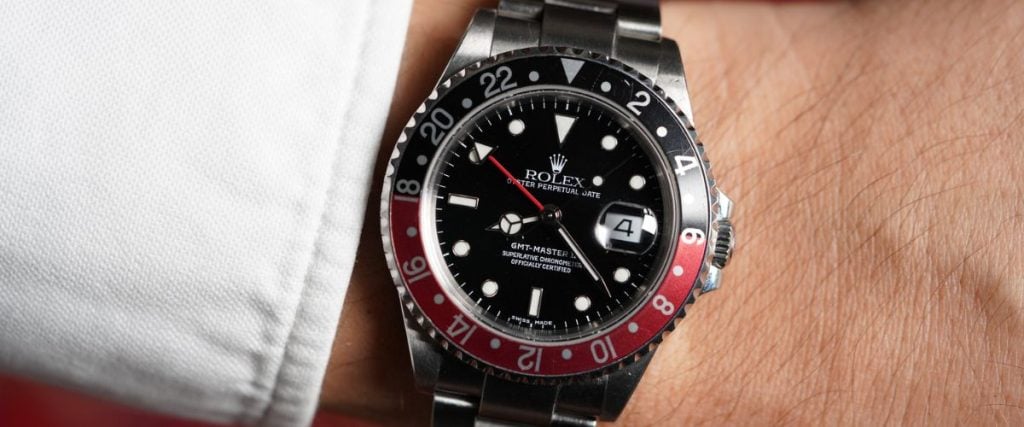
In 1983, Rolex released the first GMT Master II, the ref. 16760, with a red/black aluminum bezel insert, and it immediately earned the moniker “Coke”. It also had a couple of other nicknames that wouldn’t fly today—“The Fat Lady” and “The Sophia Loren” due to its larger crown guards, and thicker, “curvier” case.
The reason for the additional girth was the use of the new Caliber 3085 movement which allowed the aforementioned decoupling of the hours hand from the GMT hand so the hours hand could be independently adjusted without interrupting the minutes and seconds hands when entering a new time zone, making it a “traveler’s” GMT.
A frequent flyer could then leave the GMT hand in the “home” time zone and also track a third time zone by rotating the bidirectional bezel to align the desired hour on the 24-hr scale with the GMT hand.
There was a tradeoff, however. The Caliber 3085 movement could not accommodate the “quick set” date function, and from that point forward, the date could only be changed by moving the hours and minutes hands forward or backward.
In addition to “true” GMT functionality, the ref. 16760 included other improvements, such as an upgrade from an acrylic crystal to scratch-resistant sapphire, and a white gold surround for the indices to prevent tarnishing, a feature still present in the modern GMT Master II.
The next iteration of the GMT Master II “Coke” was the ref. 16710 which was released in 1989. A ref. 16710 “Pepsi” GMT Master II was launched as well.
Both remained in the Rolex catalog through 2007, and for a while, were offered alongside the GMT Master Pepsi 16700 which was manufactured through 1999 and then discontinued, ending the GMT Master era.
The ref. 16710 had a slimmer profile—still a 40mm case diameter, but the thinner Rolex Caliber 3185 movement and the subsequent 3186 allowed for a reduction in case thickness from the ref. 16760’s12.61mm, to 12mm, along with a shorter lug-to-lug distance.
The ref. 16760, as well as pre-1997 ref. 16710s, had tritium lume with “Swiss-T < 25” print dial. Afterwards, there was a transition to Luminova from ’98-’99. Since 2000, SuperLuminova has been used in all GMT Master IIs. Solid, milled end-links were introduced in 2000, and drilled lugs were phased out in 2003.
Another interesting ref. 16710 variation was “error” or “stick” dials, which have an open Roman numeral instead of a capped one. Later 16710s were powered by the updated Caliber 3186 which featured a Parachrom hairspring for better magnetic resistance and a faster date change after midnight.
The GMT Master II ref. 16710 had a long run that ended in 2007. Since then, the question of whether or not Rolex will re-introduce a “Coke” GMT-Master II has been on watch enthusiasts’ minds, especially every spring in the weeks leading up to Watches and Wonders.
A 2022 Rolex patent for the manufacturing of a red/black ceramic bezel insert fueled speculation even more.
But by 2024, still no Rolex “Coke”—although Rolex sister brand Tudor did shake up the watch world with the release of a “Caffeine-Free Diet Coke” 39mm Black Bay 58 GMT sporting a red/black bezel and tannish, faux patina.
Is 2025 the year? I’m going to stick my neck out and predict the answer is, drum roll please, “Yes!”
With the aforementioned patent, the appearance of a red-black bezel by Tudor in 2024, Rolex ramping up manufacturing capacity, and 2025 being the 70th anniversary of the GMT Master lineage, I think this is the year they pull the trigger.
But that may be so much wishful thinking on my part—plus my strong preference for Coke products, which probably resulted from my mother putting Coke in my baby bottle in the early 1960s (Do NOT try this at home!).
Rolex Coke vs. Pepsi – How to Choose
If a room in your house is decorated wall-to-wall with either Coke or Pepsi memorabilia, then your choice is probably already baked in.
For the rest of us, perhaps the main differentiator and selection criterion are the bezel insert colorways. Make no mistake about it, the “Pepsi” red/blue combination is the “OG” and simply pops, adhering closely to the GMT Master’s heritage of bold, globetrotting adventure.
As such, it gives off a toolish and sporty vibe more than a dressy one. Still, if you wear it with a tux, even those who aren’t into watches may notice the bright and colorful signal from across the ballroom and think “Ah, I bet that’s a Rolex.”
The “Coke” red/black bezel insert is more subdued and sophisticated. It certainly would go well with black, formal attire, but its versatility extends to a wide variety of colors and styles of clothing. Flying under the radar can also have advantages, such as more safety during foreign travel.
With the rise of global watch thief gangs, you might breathe easier wearing the more stealthy “Coke” GMT Master II on the streets of Rome than the “Pepsi”, which can sometimes shout, “Hey y’all, I’m from ’Murica! Rob me!”
If you’re more interested in vintage and neo-vintage pieces than modern GMT-Master IIs, then you’re going to have a party going through all the many interesting references and variations available on the vintage and secondary markets.
If you’re interested solely in buying a “Coke”, then you’re going to be limited to vintage and neo-vintage pieces with aluminum bezel inserts from 1983-2007—that is, unless Rolex finally releases a “new Coke” with a Cerachrom bezel. But rest assured, there are many “old Cokes” available out “in the wild”.
Another consideration is how you plan to wear it. All GMT Masters and GMT Master IIs ever made were rated at 100m/330ft of water resistance.
However, if you plan to wear it in or around water, or other rugged conditions, do your due diligence and make sure pre-owned, neo-vintage, and vintage pieces you’re considering have been serviced in the not-to-distant past, including replacing and oiling gaskets.
Since older references have less robust build quality than modern ones, it’s always a good idea to keep them away from water. If you plan to wear the timepiece mainly as an everyday watch and not submerge it in water, then you’ll have more options.
Setting a budget should always be the first move before purchasing a luxury watch. If you want a new GMT Master II at retail, then may the Greek god of time, Cronos, be with you! The wait for a new GMT Master II is typically very long, and if you decide to go pre-owned or gray market for a late model or “never worn” one, then expect to pay a hefty premium.
Let’s say money is no object, you have a very well connected AD, and you want to fly high above the all-steel “Pepsi” proletariat masses.
Explore the
Biggest Pre-Owned Collection of Luxury Watches
If so, Rolex offers the GMT-Master II “Pepsi” ref. 126719BLRO in “stealth wealth” 18kt white gold and matching Oyster bracelet, with both “midnight blue” (retail $45,200 USD) and “meteorite” (retail $47,500 USD) dials.
The bling doesn’t stop there. It’s technically incorrect to say that Rolex doesn’t currently offer a “Coke” GMT Master II. Are you personally known as a “VIP client” at Rolex HQ and interested in an off-catalog “Icy Coke”?
If so, for a cool $250,000-plus market price, you can have a red/black bezel, consisting of 18 black sapphire, 18 rubies, and 12 diamonds, in all-18kt yellow gold with brilliant diamond lugs (ref. 126758 RUSA) or baguette diamond lugs (ref. 126778 RUSA), and all-18kt white gold with baguette diamond lugs (ref. 126779 RUSA).
That’s a lot of “ice”! Be careful. If you fly too close to the sun, your wings may melt!
Coming back down to earth, if you desire a new all-steel “Pepsi” GMT Master II and have an AD who can hook you up for retail, the ref. 126710BLRO in 2025 is available from authorized dealers for $10,800 USD with Oyster bracelet, and $11,000 USD with a Jubilee.
According to WatchCharts, the average preowned ref. 126710BLRO market price as of this writing is $19,037 USD—“hefty premium” indeed! A “never worn” piece with original box and papers will command even more.
Keep in mind that there are a lot of Rolex vintage and neo-vintage ref.1671s out there in both “Pepsi” and “Coke” colorways. As of this writing, WatchCharts shows the average market price of an all-steel 1671 to be more reasonable and much closer to current retail at $11,714 USD. While market prices fluctuate, of course, in general, all-steel GMT Master IIs are going to hold their value well.
Which one would I choose? Good question! A steel GMT-Master II is an aspirational watch for me, and I do ogle them on a regular basis. Right now, I would probably buy a neo-vintage (late 90s, early 2000s) ref. 1671 “Coke”.
Secondary market GMT Master IIs from that era are more likely to be in good condition than older references, but still much less expensive than ones from 2018 to the present. I’d choose “Coke” because it’s my cola of choice (see previous Dr. Freud reference), plus I like the idea of wearing a more subdued, “stealth” watch “in the wild”.
But hey, if an AD called me right now and offered me a new all-steel “Pepsi” at retail, I’d probably grab the opportunity. Take that, Mom!
Conclusion
GMT watches are all the rage in 2025, with new models from various manufacturers emerging almost every week. Some of them are very good, some even great. Still, nothing is likely to ever dethrone “The Crown’s” GMT Master II.
Like I said in the beginning, the real answer to the question “Coke or Pepsi?” is not an “either/or” response, but instead a “both/and”. Either way, you’ll be the winner wearing “The Real Thing” or “The Right One, Baby!” on your wrist.
About Exquisite Timepieces
Established in 1998, Exquisite Timepieces is your one-stop shop for all things luxury watches! We are an authorized dealer for 60+ luxury watch brands including Omega, Hublot, Seiko, & Longines! We are proud to showcase one of the world’s largest pre-owned watch collections, including renowned brands like Rolex and Patek Philippe. Check out our brand new watch arrivals here and popular pre-owned listings here.


